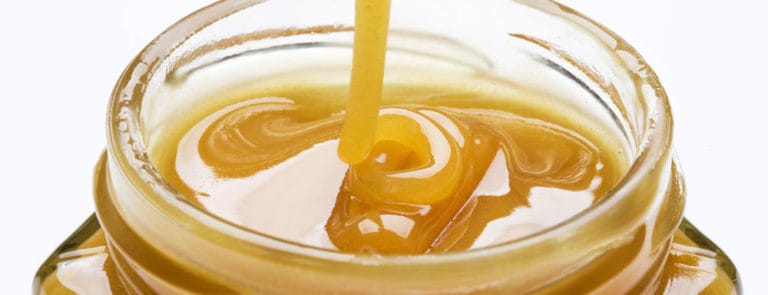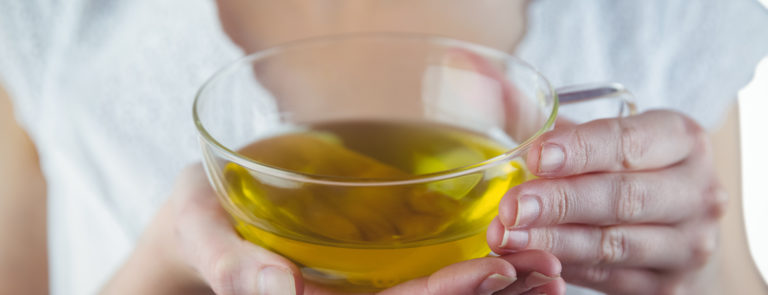15% off €25
How to use Manuka honey: 14 ways

Smart ways to get the most from this wonder product.
You’ve probably heard the buzz around it, but what is Manuka honey used for?
Manuka honey’s proven antibacterial properties mean it has excellent benefits, from being a natural skin soother, an active ingredient in face masks and even being able to help calm a sore throat.1
Unlike other nectars, those produced by the Manuka bush’s flowers – native to New Zealand – mean bees can create honey containing high levels of methylglyoxal (MGO), which has antibacterial properties.2
The higher the MGO rating (all certified by independent labs, down under), the higher the antibacterial properties.
So, what are some of the best ways to make the most of this cult health product?
We’ll talk you through fourteen different uses of Manuka honey below.
In this article, you’ll find out
14 different of Manuka honey for you to try
There are so many ways to try Manuka honey, from including it in delicious recipes and using it as an ingredient in your next pamper night to adding it to your morning brew.
Read on to find fourteen of our favourite ways to use Manuka honey in our day-to-day lives.
-
Straight off the spoon
The higher the MGO of your honey, the more potent it may be.
We recommend you sip your honey from a teaspoon, hold a spoonful on your tongue, and let it melt away if you feel your mouth needs a little TLC.
Also, try to avoid other food and drink for at least 15 minutes.
-
Stirred into a smoothie
Due to the honey’s sweetness, you might want to reduce the number of berries in your smoothie. But otherwise, pick your favourite recipe, blend, and you’re good to go!
Avoid storing any leftovers in the fridge, or the honey could begin to crystallise. If this happens, just remove the lid, gently warm the jar and stir until the crystals melt (sticking the pot in a pan of warm water does the job).
Remember that, like all honey, Manuka is not recommended for children aged under 12 months.
Why not try this delicious Manuka Honey & Blueberry Smoothie recipe?
-
Smeared onto skin
For any issues with your skin – or just to moisturise – apply directly in a smooth, even layer.
Its antibacterial properties make it a soothing feast for your face, as a study by Evid Based Complement Alternat Med found it effective for providing antibacterial protection and promoting wound healing.3
So how to use Manuka honey on wounds and spots?
Simply apply directly to sore spots or wounds on the skin with freshly washed hands or a cotton bud. And as tempting as it may be, try not to lick it off.
-
As part of a DIY facemask
The facemask trend is still abuzz in the beauty world; not only are facemasks beneficial to your skin, but you get the perfect excuse to sit back and relax.
Manuka honey is a favourite ingredient among the DIY crowd thanks to its cleansing and soothing properties, so you get more from your own bespoke mix and a recipe that’s right for your skin’s needs (and there’s no packaging).
Try one of these five manuka honey masks that suit all skin types.
-
In your next meal
If you’re still looking for inspiration on how to use Manuka honey, when baking, switch the sugar for a half measure of honey and reduce the oven temperature by 15°C to prevent it from browning too much.
Be aware, though, that cooking honey at a high temperature may damage natural enzymes in the honey. With liquid recipes, swap the amount of sugar for the same of honey.
Check out this delicious Manuka Honey & Sriracha Stir Fry Sauce recipe.
-
Swirl into hot water or tea
If your throat is sore, one of the best ways to enjoy Manuka honey is to stir it into hot water or tea.
A study by The Journal of Oral Rehabilitation highlighted that consuming Manuka honey can significantly lower the level of Streptococcus mutans – aka the bacteria that causes sore throats.4
Simply mix some manuka honey into your hot drink and give it a stir.
You can even mix Manuka honey and lemon for a bit of added flavour. You can slice up a lemon and pop a slice in your drink or try a bit of lemon juice.
So having it this way means you get all the antibacterial properties of Manuka honey and a soothing yet sweet drink to sip on!
-
Add a drizzle to your morning porridge
Get your morning off to a great start by adding Manuka honey to your hot, cooked porridge oats.
The combination of slow and fast GI carbohydrates will give you energy for hours.5
-
Stir a spoonful into yoghurt
Just stir a spoonful of Manuka honey into yoghurt, along with any mix-ins that you choose (we like chopped nuts, berries, ground flaxseed and flaked coconut).
It turns your plain yoghurt into a treat you’ll crave over and over.
-
Trickle a little over fresh fruit
Chopped fruit or mixed berries are the perfect partners for Manuka honey.
We think it goes particularly well with citrus fruit: try orange slices or grapefruit halves with a generous drizzle of Manuka honey for a sweet breakfast or mid-afternoon snack.
-
Toss in with roasted vegetables
Manuka honey makes a wonderful coating for roasted root veggies.
Mix the honey with orange juice to roast carrots, or brush onto parsnips for a golden glaze.
Prefer to stir fry your veggies? Try out this Manuka Honey and Sriracha Stir Fry Sauce.
-
Mix into salad dressing
Salads are a healthy and versatile lunch option.
But to amp it up a little, try adding a small dollop of Manuka honey into your homemade salad dressings for a touch of sweetness that won’t overpower the other ingredients.
-
Glaze freshly baked muffins
What could be better than hot muffins straight out of the oven, glazed with healthy Manuka honey?
Warm a little honey to make it thinner, then coat the back of a teaspoon to glaze your muffins. You can also add it to your next cake!
Why not try this Manuka Honey and Orange Polenta Cake today?
-
Pour over warm pancakes or waffles
Take those fluffy pancakes, delicate crepes, or warming waffles to another level by drizzling Manuka honey over the top.
Scatter them with berries, nuts, or seeds first, then finish the presentation with honey.
Give these Manuka Honey Pancakes a go if you need some recipe inspiration.
-
Make a comforting hot drink
But why not try swirling a little to your favourite tea, or mix with almond milk and cacao powder to make healthy hot cocoa?
What is the best way to take Manuka honey?
You can take Manuka honey in many ways, but which is best for your health?
To reap all the benefits of this cult product, it’s best to have it straight from the jar.
In other words, to maximise its antibacterial properties, take it by the teaspoon or drizzle it over some toast, rather than adding it to boiling water.
When is the best time to take manuka honey?
There isn’t a specific time you should take Manuka honey, as you can get the same benefits from it all day.
However, anecdotal evidence suggests that consuming food on an empty stomach is best if you want it to reach your gut faster, but always check with a medical professional if you’re unsure of the best approach for you.6
How long does Manuka honey take to work?
You might also wonder: how long does manuka honey take to work? Well, it depends on how you take it and what you take it for.
In some cases, like soothing a sore throat, you can feel the effects quickly. In other cases, it may take a little more time, but be patient! Let the Manuka honey work its magic.
Who should not take manuka honey?
While Manuka honey may have a positive effect on your health, there are a few potential side effects that may occur.
For example, if too much honey is consumed, it may cause a spike in blood sugar, as one tablespoon of Manuka honey contains approximately 16 grams of sugar.7
This means that it’s essential for people with diabetes to check with their doctor before trying it.
It also goes without saying that people with a honey allergy should avoid using Manuka honey.
How much manuka honey to take?
Whilst Manuka honey has a great range of benefits, it still has high sugar content.
A good portion size of Manuka honey is a maximum of two teaspoons or 20g per day.8
This will be enough to reap the fantastic benefits of manuka honey without going overboard on the sugar.
The final say
From accompanying your morning porridge to adding it to salad dressing, there are plenty of different ways you can use Manuka honey – and don’t forget that it’s a tremendous topical ingredient for your skin too!
If you’re still unsure what Manuka honey is, find out everything you need to know in our Manuka honey guide and don’t forget to check out our recommendations of the best Manuka honey products to try!
Last updated: 13 October 2022
- https://www.ncbi.nlm.nih.gov/pmc/articles/PMC6613335/
- https://www.ncbi.nlm.nih.gov/pmc/articles/PMC6613335/
- http://www.ncbi.nlm.nih.gov/pmc/articles/PMC2686636/
- https://pubmed.ncbi.nlm.nih.gov/10784339/
- https://au.atkins.com/articles/slow-and-fast-carbohydrates-whats-the-difference.html
- https://manukahoney.co.uk/info/faqs.html
- https://fdc.nal.usda.gov/fdc-app.html#/food-details/730084/nutrients
- https://pubmed.ncbi.nlm.nih.gov/20064284/




